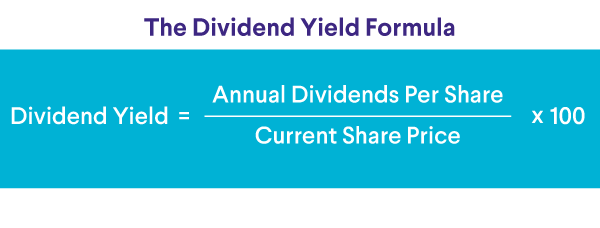Dual Income No Kids (DINKs): Definition and Explanation
The acronym “DINK” stands for “dual income, no kids,” and references a household in which two adults are working for an income (dual incomes) but do not have children (no kids), and as a result, fewer expenses. DINKs have become more common over the years as many young adults have opted not to have children, often due to the financial resources required to raise them.
What Does DINK Mean?
As noted, DINK is short for “dual income, no kids,” or “double income, no kids.” It refers to households where there are two active incomes and no children. The two incomes can either come from both partners or one partner having two incomes.
Some couples opt to wait longer before having kids, so they fall into the “DINKY” category, which stands for “dual income, no kids yet,” allowing them to save money.
💡 Quick Tip: Investment fees are assessed in different ways, including trading costs, account management fees, and possibly broker commissions. When you set up an investment account, be sure to get the exact breakdown of your “all-in costs” so you know what you’re paying.
The Significance of Dual Income, No Kids
Without the added expense of children, DINK couples might have more disposable income available for spending and investing. Marketing campaigns for luxury vacations, homes, and other high-end items often target DINK couples.
However, just because a household has two incomes doesn’t automatically mean they have more money – there’s always room for improving your financial life, after all.
There are some reasons why they may still struggle financially, including:
• Their two incomes are not very high
• They live in an expensive area
• They have spending habits that eat up a large portion of their income
Why Are More Couples Choosing the DINK Life?
One of the main reasons couples choose to wait or forgo having children is the financial cost, which can range well into the hundreds of thousands of dollars over the years.
Further, when the Great Recession hit in 2008, many Millennials were just graduating from college or starting their careers. That recession made it challenging to get jobs and begin investing for the future. On top of recovering from the recession, nearly half of Millenials and a third of Gen Xers have a significant amount of student loan debt.
These factors have made it difficult for young people to achieve financial milestones and start families earlier in life. However, there are some couples who choose to wait a few years before having kids after they get married for non-financial reasons. They prefer to use their time as a young couple to travel, make life plans, and enjoy an untethered lifestyle.
Types of DINKs
DINKs come in a variety of types, including new couples and empty-nesters.
New Couples
New couples can be newlyweds, or simply those living together in a single household who are not married. They may be young or older, too, and are still feeling out their relationship and planning out their next steps. Children may or may not be a part of those next steps, but for the time being, new couples are standing pat with double-incomes.
Empty Nesters
While empty nesters may be parents, they may be at the point in their lives where their children have grown up and moved out, no longer presenting a financial burden. With that, they have some significant space in their budgets unshackled, with which they can make different spending, saving, and investing decisions.
Same-sex Couples
While many same-sex couples do have children, many do not, and they might also fight into the DINK category.
Structuring a DINK Household
There are many costs associated with having children, including clothing, food, healthcare, and education. Partners who don’t have children might instead choose to splurge or save up for early retirement.
DINK couples with disposable income have many options for how to spend or invest their money. Some couples may choose to buy nice cars, while others may enjoy going out to eat. They also potentially have more free time to travel and spend money. In general, clothing, food, or travel that may have been too expensive for couples with children can be accessible for DINK couples.
A couple with no children likely won’t need as many bedrooms or as much space in terms of housing. They can either choose to save money by renting or buying a smaller place to live. They can also choose to use the extra space for other purposes, such as a home gym, art studio, or rent out a room for extra income.
Kids also take up a lot of time and have fairly rigid schedules. Some DINK couples may choose to take more time off for travel and leisure, while others might choose to work longer hours or find ways to earn supplemental income.
In addition to purchasing and leisure options, dual income couples may have the opportunity to invest their extra money. They might purchase stocks, bonds, real estate, or explore other opportunities.
They could also try and get by on a lower income, too – for some DINKs, one earning a salary of $40,000 is enough to make ends meet in certain circumstances, especially if the other partner earns more.
7 Financial Tips for DINKs
Learning about each other’s financial habits and goals is important so that couples can get on the same page, whether they’re planning to have children or not. It also helps to have productive conversations about finances.
Establishing open and honest communications before having kids may make things easier in the long run. There are some crucial areas for couples to work on if they want to live a successful DINK lifestyle or get their finances set up before having children:
1. Paying Off Debts
Before setting off on a lavish vacation, it’s wise for DINK couples to have a plan to pay off high-interest debts such as credit cards and student loans.
Without kids, home loans, and other monthly bills, couples may have more available funds to tackle their debt and. Once they’ve paid down the debt, they can use the extra money they’ve saved from monthly interest payments to invest or spend elsewhere.
2. Creating Sustainable Spending Habits
Whether a DINK couple is waiting to have kids or doesn’t ever plan on having them, practicing responsible spending habits is crucial for financial success. If a couple is always in debt, having kids probably won’t change that.
Similarly, not having kids could make it tempting to go out to eat or travel a lot. Having conversations about the type of lifestyle each person wants both now and over the long-term helps make day-to-day spending choices easier. Earning $100,000 is a good salary, but if you have bad spending habits, it may still not be enough.
3. Traveling Smart
Travel is a huge draw for many DINK couples, but it can quickly get expensive. If couples want to travel a lot, they might consider staying in less expensive places and skipping the luxury trips.
If luxury is important to a couple, they might think about only going on one big trip per year and taking advantage of points, credit cards, and other offers to maximize their ability to see the world.
4. Planning Ahead and Investing Early
The more couples can figure out what they want in life and get their finances organized, the easier it is to plan their finances. If they plan to have kids in the future, they might consider saving now for college and other child-related expenses that may come later.
Factoring in future raises, inheritances, and other additional income or expenses is also helpful. Even if couples don’t start with high incomes, the earlier they can start saving, the more their portfolio has time to grow.
5. Consolidating Stuff
Just as couples without kids may not need to live in a large home, they may not need as many things. DINK couples might choose only to have one car or bicycle. There might be other items that each person has been buying for themselves that could be shared.
6. Acquiring New Skills
Couples without kids may choose to invest some of their time and money into additional training and education. If they plan to have kids in the future, this might help them move up the career ladder or earn a larger salary when the kids do come.
7. Getting Wise About Taxes
DINK couples can make smart financial choices to minimize their taxes. Contributing to an HSA or putting pre-tax income into a 401K can help reduce the tax burden. Owning a home may also provide tax breaks to some homeowners.
Get up to $1,000 in stock when you fund a new Active Invest account.*
Access stock trading, options, auto investing, IRAs, and more. Get started in just a few minutes.
The Pros and Cons of a DINK Lifestyle
There is nothing dinky about the DINK lifestyle. Not having kids, or waiting to have kids presents a huge financial opportunity for many couples. However, if they aren’t smart about their savings and spending, couples may risk running into financial trouble.
Pros of Becoming a DINK Couple
• More free time and money to travel for work or pleasure.
• Ease of mobility — moving or traveling to a new house, city, or country is more manageable without kids.
• Disposable income to spend on cars, clothing, food, or other items.
• Ability to save money by living in a smaller house and not paying for children.
• Opportunity to save and invest extra income.
Cons to Remaining a DINK Couple
• Potential for overspending and splurging on travel and luxuries rather than saving and investing.
• DINK couples may be in a higher income bracket and have to pay more taxes.
• There may be less family support for caregiving as they age.
Planning for a Life Without Children
Life without kids might be an excellent decision for many couples. The extra free time and money can be used in many meaningful ways.
However, couples need to be on the same page about whether they want kids, and there are some things to keep in mind about a childless future.
Couples will need to figure out:
• How they’ll spend their retirement years
• Who will visit or take care of them when they’re older
• And who they will leave their money and assets to after they die
Saving up extra money for caregivers, retirement, and unforeseen circumstances can be an intelligent strategy for DINK couples. DINK couples must also make sure that they create an estate plan, so that their assets get distributed according to their wishes after they pass away.
Key Financial Baselines To Keep in Mind
When doing financial planning for the future, a few things are certain. Couples will have to pay taxes, and they’ll need food, shelter, and basic necessities. Beyond that, there are some baselines couples can look to as they plan for retirement, investing, home buying, and any kids they might plan to have.
The 4% Rule
Using the 4% rule, most couples will likely need to sock away more than $1 million for retirement, in order not to outlive their savings.
Home Costs
As of the fall of 2023, the average house costs nearly $500,000 in the U.S. — something to keep in mind.
Although these numbers may sound like a lot of money, couples with two incomes and no children can start saving some of their extra cash early and take advantage of compound interest over time. If they are savvy about their savings and spending, couples can potentially retire early and enjoy more free time for travel and personal pursuits.
Planning for the Ultimate DINK Lifestyle
To recap, “DINK” stands for dual income, no kids, and refers to households with two earners and no children. These households do not have the financial responsibilities associated with children, and thus, tend to have greater purchasing power than other families or households that do have kids.
Going kid-free has many upsides, but it’s important to be money smart, plan, and work together to create a prosperous and secure future. Couples who are planning to never have children or to wait to have them, often have more disposable income to put toward their financial goals, including investing.
Ready to invest in your goals? It’s easy to get started when you open an investment account with SoFi Invest. You can invest in stocks, exchange-traded funds (ETFs), mutual funds, alternative funds, and more. SoFi doesn’t charge commissions, but other fees apply (full fee disclosure here).
FAQ
What does the term DINKs refer to?
“DINKs” refers to households with two earners and no children. It’s an acronym that stands for “double income, no kids,” or “dual income, no kids.”
What are the benefits of dual income without kids?
The primary benefit of DINK households is that they do not have the financial responsibilities associated with raising children, and as a result, have more purchasing power or discretionary income. They may be able to save and invest more, accordingly.
What percentage of married couples don’t want kids?
While it’s hard to say exactly, a rough estimate would be that around 20%, or one out of five adults say they do not plan to, or want to have children.
SoFi Invest® INVESTMENTS ARE NOT FDIC INSURED • ARE NOT BANK GUARANTEED • MAY LOSE VALUE
1) Automated Investing and advisory services are provided by SoFi Wealth LLC, an SEC-registered investment adviser (“SoFi Wealth“). Brokerage services are provided to SoFi Wealth LLC by SoFi Securities LLC.
2) Active Investing and brokerage services are provided by SoFi Securities LLC, Member FINRA (www.finra.org)/SIPC(www.sipc.org). Clearing and custody of all securities are provided by APEX Clearing Corporation.
For additional disclosures related to the SoFi Invest platforms described above please visit SoFi.com/legal.
Neither the Investment Advisor Representatives of SoFi Wealth, nor the Registered Representatives of SoFi Securities are compensated for the sale of any product or service sold through any SoFi Invest platform.
Financial Tips & Strategies: The tips provided on this website are of a general nature and do not take into account your specific objectives, financial situation, and needs. You should always consider their appropriateness given your own circumstances.
Advisory services are offered through SoFi Wealth LLC, an SEC-registered investment adviser. Information about SoFi Wealth’s advisory operations, services, and fees is set forth in SoFi Wealth’s current Form ADV Part 2 (Brochure), a copy of which is available upon request and at adviserinfo.sec.gov .
Claw Promotion: Customer must fund their Active Invest account with at least $25 within 30 days of opening the account. Probability of customer receiving $1,000 is 0.028%. See full terms and conditions.
SOIN0723003











